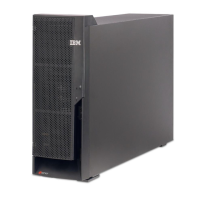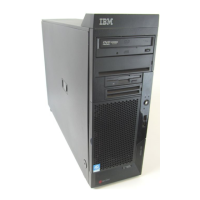Chapter 2. Diagnostics Overview
The system uses an integrated set of software diagnostic procedures to help isolate
failing components and system maintenance. This book, along with the
RS/6000
Eserver
pSeries Diagnostic Information for Multiple Bus Systems
, is the basis of the
diagnostic procedures. Refer to the system service guide when running diagnostic on
your I/O subsystem.
Power and Attention LEDs
The Power and Attention LEDs provide a means to identify failing components in your
subsystem. When a failing component is detected in your system, the system’s
Attention LED is turned on.
Component LEDs
To further help you identify the failing component, all system components have
individual LEDs that indicate a failure when lit. The LEDs are either on the component
itself or on the carrier of the component (memory card, fan, memory module, CPU).
The LEDs are either green or amber in color. A lit green LED indicates that the system
or component is receiving power. A lit amber LED indicates the system or component
has a failure.
Resetting the LEDs
To reset the LEDs, do the following:
1. Replace the failing component with the new component.
2. Log in as root user.
3. At the command line, type diag.
4. Select Task Selection.
5. Select Log Repair Action.
6. Select the device that was repaired. (If the device is not listed, select sysplanar0.)
Checkpoints
The system uses various types of checkpoints, error codes, and SRNs, which are
referred to throughout your system’s service guide. These codes can appear in the
service processor boot progress log, the AIX error log, and the operator panel display.
Understanding the definition and relationships of these codes is important to the service
personnel who are installing or maintaining the system.
Service Request Numbers (SRNs) are listed in the
RS/6000
Eserver
pSeries
Diagnostic Information for Multiple Bus Systems
, order number SA38-0509.
41
